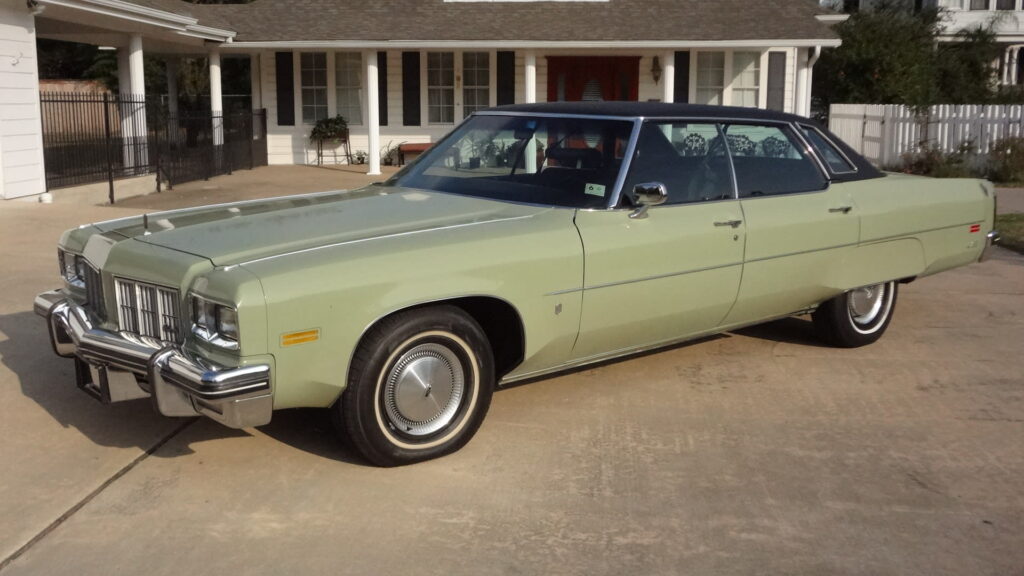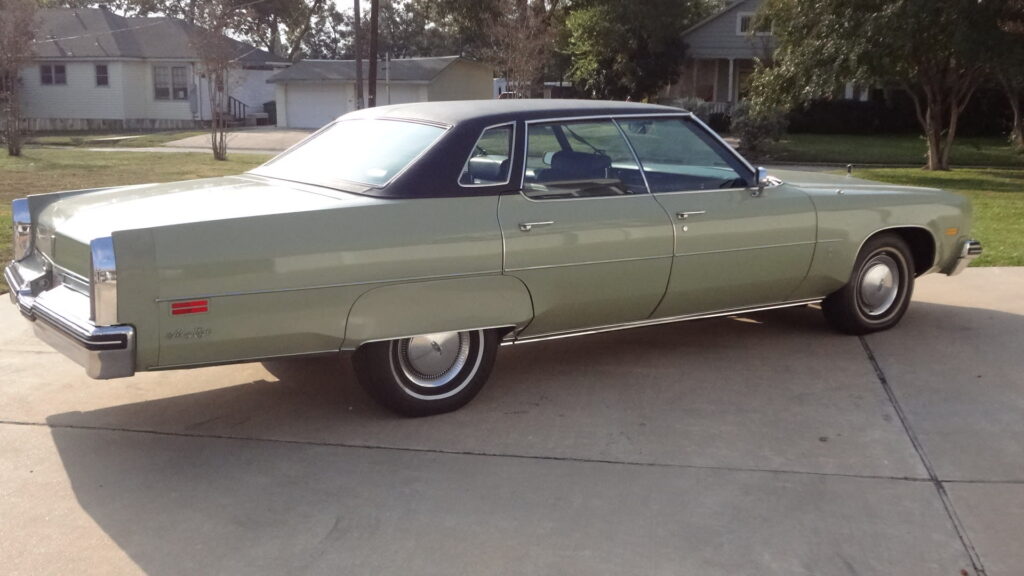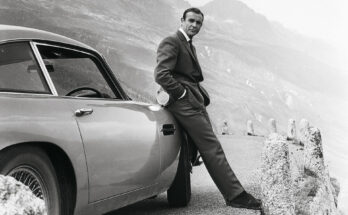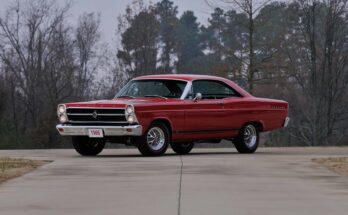The 1975 Oldsmobile 98 Regency stands out as the “best” production model of the 1975 Oldsmobile 98 lineup due to its position as the top-of-the-line trim, offering the highest level of luxury, advanced features, and refinement for that model year. Below is a detailed overview of the 1975 Oldsmobile 98 Regency, highlighting why it was the premier offering:
Overview of the 1975 Oldsmobile 98 Regency
The Oldsmobile 98, part of the ninth generation (1971–1976), was Oldsmobile’s flagship full-size luxury car, built on General Motors’ C-body platform alongside other premium vehicles like the Buick Electra and Cadillac DeVille. The Regency trim, introduced to celebrate Oldsmobile’s 75th anniversary in 1972, continued in 1975 as the most luxurious and well-equipped version of the 98, embodying the era’s ideal of American automotive opulence with its massive size, plush interior, and powerful performance.

Key Features of the 1975 Oldsmobile 98 Regency
- Engine and Performance:
- Standard Engine: The 1975 Ninety-Eight Regency was powered by a 455-cubic-inch (7.5L) Rocket V8 engine with a four-barrel carburetor, producing 190 horsepower and 350 lb-ft of torque.
- Fuel Efficiency: A 2.41:1 axle ratio was introduced for improved fuel economy, though the car averaged around 9–10.44 MPG, reflecting the era’s focus on power over efficiency.
- Transmission: It came equipped with a three-speed Turbo-Hydramatic automatic transmission, known for its smooth operation and durability, standard across the 98 lineup.
- Catalytic Converter: Most 1975 models included a catalytic converter to meet new emissions standards, requiring unleaded gasoline, though some Canadian models were exempt.
- Dimensions and Design:
- Size: The 1975 Ninety-Eight Regency measured 232.4 inches in length, making it one of the longest cars Oldsmobile ever produced, with a 127-inch wheelbase for a spacious cabin.
- Exterior Styling: It featured a stately design with long, sweeping lines, Cadillac-esque rear tailfins, and a formal roofline. The Regency often included a vinyl landau top (e.g., white textured vinyl) and chrome trim for added elegance.
- Bumpers: Federally mandated 5 mph bumpers contributed to its length, with revised grilles and taillights enhancing its upscale appearance.
- Interior Luxury:
- Upholstery: The Regency offered premium broadcloth or optional leather upholstery, with a plush split-bench front seat featuring power adjustments for the driver.
- Features: Standard equipment included power windows, power locks, power steering, power brakes, air conditioning, cruise control, intermittent wipers, and an electric clock. The interior featured wood appliqué on the dashboard and chrome accents for a refined look.
- Comfort: The spacious cabin, thanks to the 3-inch longer wheelbase compared to the Oldsmobile 88, provided exceptional passenger comfort, ideal for long-distance cruising.
- Innovative Options:
- Air Cushion Restraint System: The 1975 Ninety-Eight was among the first U.S. production cars to offer driver and passenger airbags, a rare and advanced feature for the time, though few buyers opted for it.
- Message Center: A new flat instrument panel with a horizontal sweep speedometer and warning light system, shared with other high-end GM models, added a modern touch.
- Aftermarket Audio: Some Regency models, like one sold on Bring a Trailer, included an aftermarket cassette stereo for enhanced entertainment.
- Body Styles:
- The Regency was available as a two-door hardtop coupe or a four-door hardtop sedan (also called a Sports Sedan). The four-door was the longest of its kind in 1974–1975, out-sizing competitors like the Lincoln Continental in certain configurations.
- Rear fender skirts and whitewall tires enhanced its luxurious aesthetic, as seen in examples like the silver Regency coupe sold for $8,800 in 2023.
Why the Regency Was the “Best” Production Model

- Top-Tier Luxury: The Regency trim offered the highest level of standard equipment and optional features, making it the most luxurious 98 model for 1975. Its plush interior, advanced options like airbags, and refined styling set it apart from the base Ninety-Eight and Ninety-Eight LS (Luxury Sedan).
- Cultural Significance: The Regency embodied the 1970s American luxury car ethos—big, bold, and comfortable—appealing to buyers seeking a commanding road presence and a smooth ride.
- Collector Appeal: Well-preserved Regency models are increasingly rare and valued, with pristine examples fetching $20,000 or more, and even average ones selling for $8,800–$14,250 in recent years.
- Performance Balance: Despite the Malaise Era’s emissions-related power reductions, the 455 V8 provided robust torque, making the Regency a capable cruiser for its size, though its handling was described as “bloated” and “wallowy” by some owners.
Production Context
- Total Production: Exact production numbers for the 1975 Oldsmobile 98 Regency are not well-documented in available sources, but Oldsmobile produced 628,720 vehicles across all models in 1975, with the 98 being a significant portion due to its flagship status.
- Market Positioning: The Regency was marketed as a step below Cadillac but above other GM full-size models, offering luxury at a lower price point, as noted in 1975 advertising: “You don’t have to be a king to drive a 98, you just have to want to feel like one.”
- Challenges: Common issues included poor fuel economy (9–10.44 MPG), a tendency for the car to feel cumbersome on the road, and occasional cosmetic issues like rust or body repair needs in surviving examples.
Notable Examples
- A 1975 Ninety-Eight Regency Coupe with 8,600 miles, sold in Reno, Nevada, for $9,500, highlighted the model’s appeal as a low-mileage survivor, though its size deterred some buyers.
- Another Regency Coupe, finished in silver with red upholstery, sold for $8,800 on Bring a Trailer in 2023, showcasing its preserved condition and collector interest.
- A 1975 Regency with a “Whorehouse Red” interior was noted in a junkyard find, emphasizing the bold styling choices of the era.


